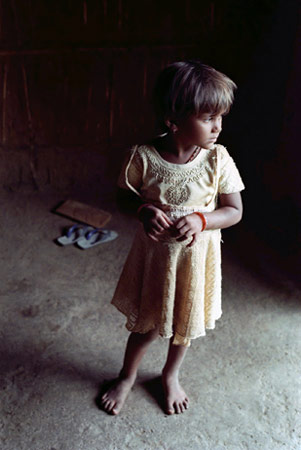Life Stages: Childhood
Indian children who survive the infant mortality rate of 30 per 1,000 live births grow up as valued members of their families. There usually exists a close emotional bond between children and their mothers (or mother figures). According to a study, since joint family atmospheres discourage marital intimacy, mothers use their children to fulfill their intimacy needs in such surroundings.
Cultural Practices
Mothers, older siblings, and grandmothers bear the general responsibilities in caring for the infant child. Grandparents play a significant role in the lives of Indian children, particularly in their upbringing and education. Mothers almost always breastfeed infants, sometimes for years. Infants usually sleep with their parents or grandparents, and strong emotional bonds may develop between children and older siblings who usually carry them around.
As they grow up, children learn the importance of hierarchy and close family ties. Families teach them to participate in various rituals and activities. In rural areas, children learn the basics of agricultural work (weeding, harvesting, and threshing) around the age of five or six. Families also encourage female children to learn domestic work. While families of the upper classes coddle and pamper their children, circumstances force children from poor families to obtain work as household servants.
Problems Persist
Although Indian society highly values children, many of them still face obstacles to their true fulfillment. The gender bias against the female child presents one of the challenging problems confronting Indian society. In rural areas, families welcome male children for their earning potential, but the birth of a female child can be unwelcome, so much so that the British Broadcasting Corporation (BBC) reported in 2006 that in the Salem district of the southern state of Tamil Nadu, almost 60 percent of infant girls were killed within three days of birth.
Indian children join kindergarten generally at the age of three and primary school at the age of five.
Indian labor laws prohibit the employment of children under 14 and limit the working of those between 14 and 18 to non-hazardous jobs. However, the breach of such laws leaves millions of children employed throughout India, even in hazardous jobs, including child labor in fireworks factories. Millions of children (sometimes abducted) are employed as beggars or as acrobats and contortionists in street circuses throughout India. Indian society encourages child labor, despite the efforts of the central and state governments, as well as various non-governmental organizations (NGOs), to eradicate it.
Copyright © 1993—2025 World Trade Press. All rights reserved.

 India
India 
